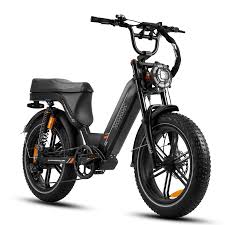The Evolution of Electric Bikes
Electric bikes have come a long way since their inception. Early models were often heavy, bulky, and limited in range. However, advancements in battery technology, motor efficiency, and design have revolutionized the industry. Today’s e-bikes are sleek, lightweight, and capable of impressive distances on a single charge. Lithium-ion batteries, brushless motors, and regenerative braking systems are just a few of the innovations driving this evolution.
Advantages of Electric Bikes
1. Environmentally Friendly
One of the most significant advantages of e-bikes is their positive impact on the environment. Unlike traditional vehicles that rely on fossil fuels, e-bikes produce zero emissions. This reduction in carbon footprint is crucial in combating climate change and reducing air pollution in urban areas.
2. Cost-Effective
E-bikes are also cost-effective compared to cars and motorcycles. The initial investment might be higher than a traditional bicycle, but the long-term savings on fuel, maintenance, and insurance are substantial. Additionally, many cities offer incentives and subsidies for e-bike purchases, further reducing the financial burden.
3. Health Benefits
While the electric motor assists with pedaling, e-bikes still provide a form of exercise. Riders can choose the level of assistance they need, making it easier to tackle challenging terrains or long distances without overexertion. This combination of physical activity and assistance promotes a healthier lifestyle and encourages more people to cycle regularly.
4. Convenience and Efficiency
E-bikes offer unmatched convenience and efficiency, especially in urban settings. They allow riders to navigate through traffic easily, avoid parking hassles, and cover longer distances in shorter times. The assisted pedaling also makes commuting less strenuous, allowing riders to arrive at their destinations fresh and ready for the day.
5. Accessibility
Electric electric bike cycling accessible to a broader range of people. Whether it’s older adults who may find traditional biking challenging, individuals with physical limitations, or those who simply prefer a less physically demanding ride, e-bikes provide an inclusive transportation option.
Challenges and Considerations
Despite their numerous benefits, electric bikes also present certain challenges and considerations. Safety is a primary concern, as higher speeds can increase the risk of accidents. Riders must adhere to traffic laws and wear appropriate protective gear. Additionally, the initial cost of high-quality e-bikes can be prohibitive for some, though prices are gradually decreasing as technology advances.
Battery life and charging infrastructure are other important factors. While modern batteries offer impressive ranges, they still require regular charging. Urban areas must develop adequate charging stations and facilities to support the growing number of e-bike users.
The Future of Electric Bikes
The future of electric bikes looks promising. As technology continues to advance, we can expect even more efficient, affordable, and sustainable e-bike models. Integration with smart city infrastructure, such as bike-sharing programs and dedicated bike lanes, will further enhance their appeal and usability.
Governments and urban planners are increasingly recognizing the potential of e-bikes to reduce traffic congestion and pollution. Policies supporting e-bike adoption, including subsidies, tax incentives, and investment in cycling infrastructure, will play a crucial role in shaping the future of urban mobility.
Conclusion
Electric bikes are more than just a trend; they are a revolutionary step towards a more sustainable and efficient transportation system. By offering an eco-friendly, cost-effective, and accessible mode of transport, e-bikes are poised to become a staple in urban mobility. As cities continue to grow and evolve, embracing the potential of electric bikes will be key to creating healthier, greener, and more livable environments for all.




